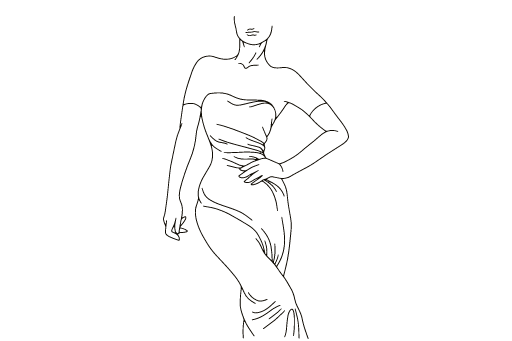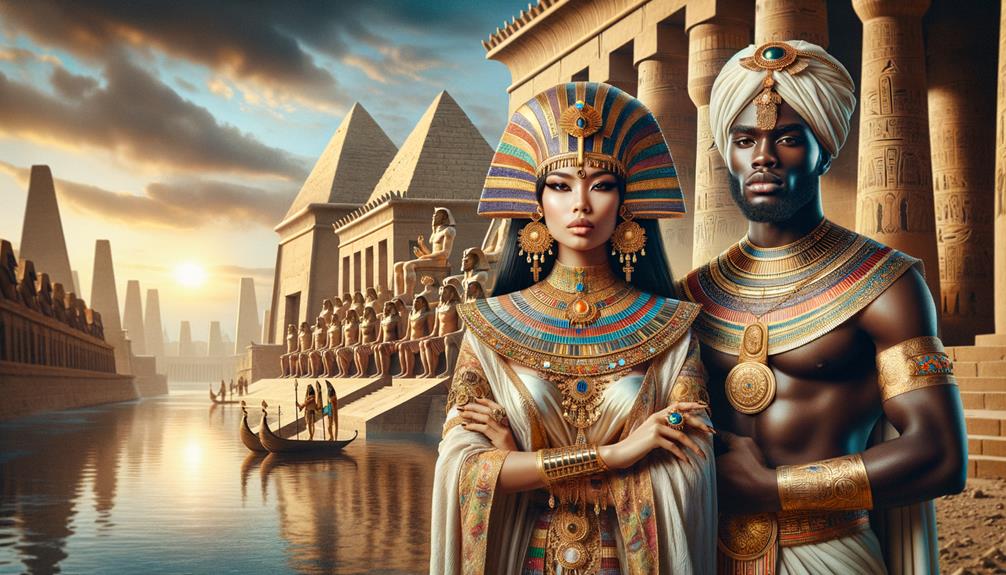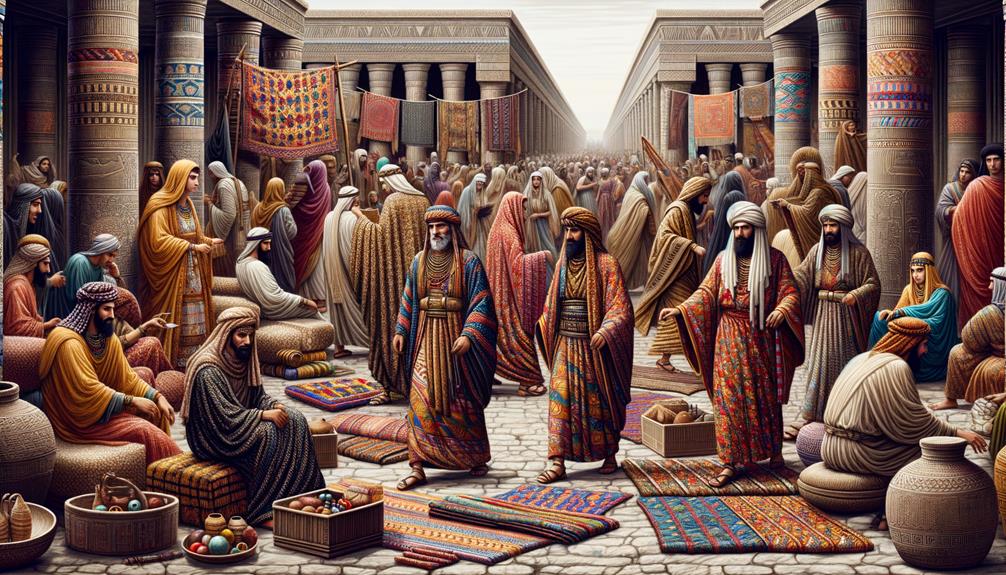Inca textiles were the heart of their society, with each pattern telling a story of history and identity. I'm still amazed by how they wove cotton from the lowlands and wool from llamas and alpacas into vibrant tapestries, using natural dyes. These garments weren't just clothing; they were symbols of status and power, featuring geometric motifs that held secrets of the past. Let's explore the stories behind these intricate designs and the skilled hands that crafted them.
History of Inca Textiles
The history of Inca textiles is a rich cultural heritage, where every thread tells a story of a civilization that thrived in the rugged Andes. I'm fascinated by how Inca weavers, particularly skilled women, transformed wool into masterpieces adorned with geometric design motifs. Each piece of clothing wasn't just practical; it was a statement of identity and social standing.
Inca textiles were often made from the wool of llamas, alpacas, and the highly coveted vicuña. The vicuña wool, renowned for its softness and rarity, was reserved for the elite, a tangible symbol of power. Imagine wearing a garment so exclusive it spoke volumes about your place in society.
The intricate geometric patterns and vibrant colors, achieved through natural dyes, conveyed more than just aesthetics. They held deep cultural significance, with each hue and motif communicating messages about wealth and heritage. These textiles served dual roles as both currency and art, making them invaluable to the Inca way of life.
When I look at an Inca textile, I see more than fabric; I see a woven narrative of a people who turned fibers into history.
Materials and Colors
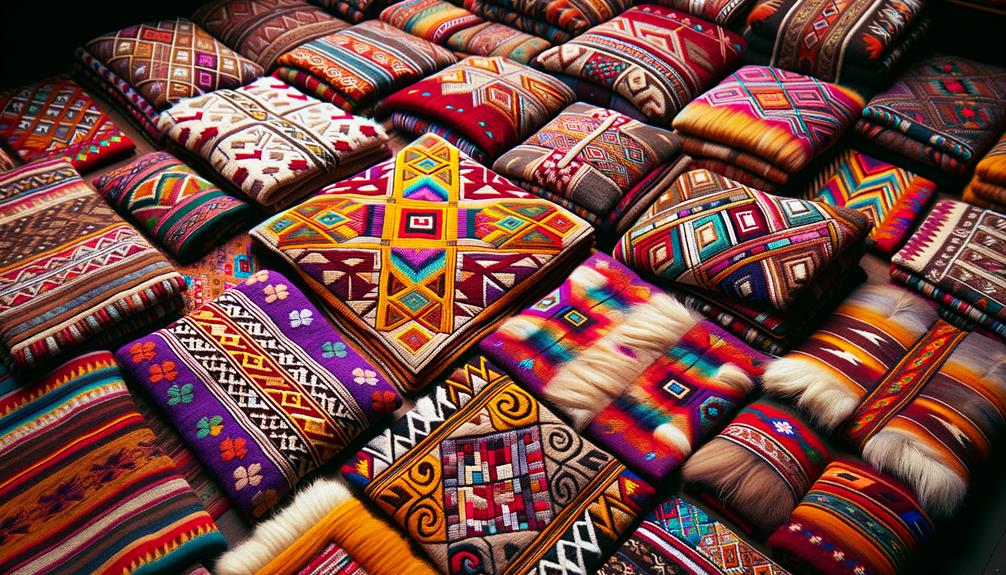
Imagine holding a piece of Inca textile, where the softness of cotton from the lush lowlands and the warmth of wool from highland llamas, alpacas, and vicuñas come together in a rich tapestry of texture and color. Each thread tells a story of a civilization that revered the art of weaving. Inca textiles were crafted with meticulous care, using materials derived from natural sources, capturing the essence of Inca culture. The finest vicuña wool, renowned for its exceptional softness, was reserved for the elite.
Colors weren't just a matter of aesthetics; they carried profound meaning. Red, derived from the crimson cochineal parasite dye, symbolized rulership and conquest. Black represented the underworld, while purple embodied nobility and prestige. Skilled Inca weavers harnessed natural dyes to create these vivid hues, which formed the foundation of their color palette.
Intricate design motifs adorned these fabrics, featuring human figures, animals, and geometric patterns that told stories of their cosmos. The textures and colors of these textiles reveal the innovation and emotional depth woven into every piece, showcasing the Inca's exceptional craftsmanship.
Textile Art Methods
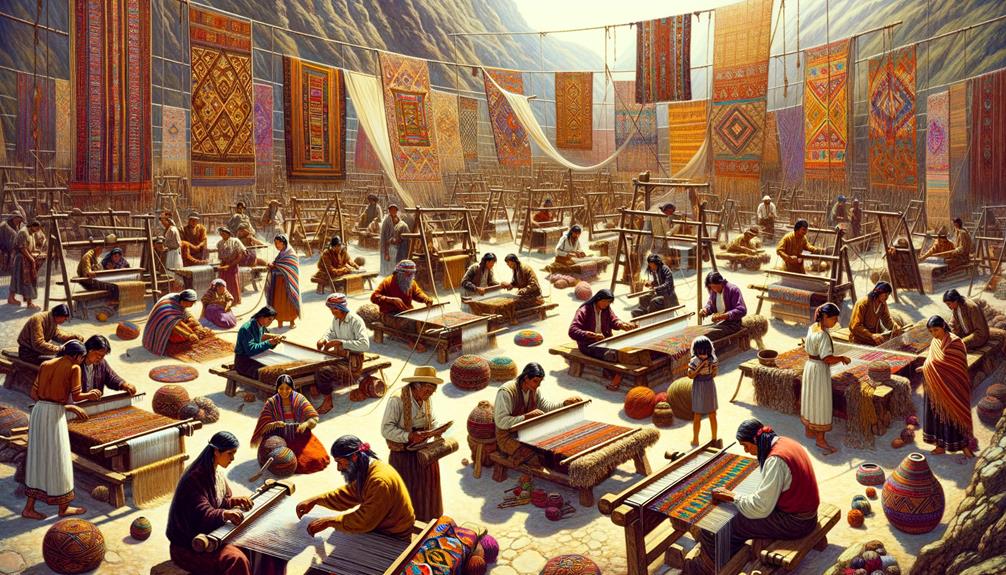
Imagine the skilled hands of aclla weavers, deftly manipulating backstrap looms to transform natural fibers into intricate textiles that brim with cultural significance. These female weavers, secluded in the Acllawasi, were masters of converting twisted yarn threads into visual marvels. The rhythmic clatter of the loom was their symphony, each beat a step closer to a masterpiece.
Using the backstrap loom, aclla weavers created textiles adorned with repeated geometric shapes and mesmerizing motifs like tocapus. They employed the method of twining, where twisted yarn threads interlace to form strong, flexible fabric. It's not mere cloth they produced; it was a canvas of cultural expression and innovation.
Imagine the geometric patterns, not just as decoration, but as a coded language, each shape narrating stories of the cosmos and the divine. In these weaving centers, creativity met precision. The female weavers, with their skilled hands, turned simple fibers into complex designs, each piece a testament to their skill and dedication. The Acllawasi wasn't just a workshop; it was a hub of artistry, where tradition and creativity blended seamlessly.
Social and Cultural Significance
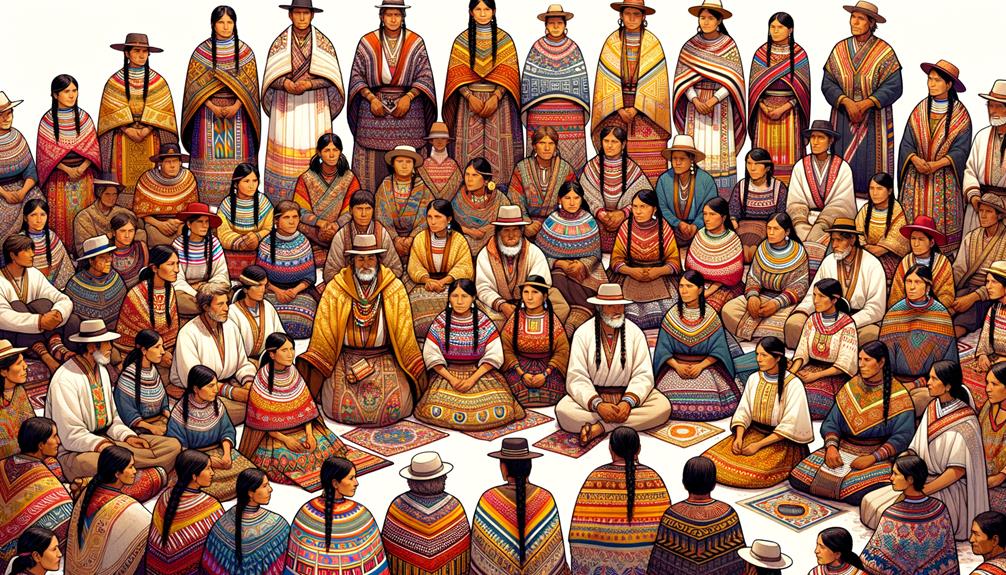
Inca textiles weren't just clothes – they were powerful symbols of social status and cultural identity. Every thread, every stitch, told a story. These Andean textiles weren't mere adornments; they were badges of wealth and status, each piece confirming one's place in Inca society.
The finest textiles, often crafted by the Chosen Women, were reserved for royalty and religious elites. Their abstract geometric designs and vivid hues clearly indicated power. These garments weren't just worn – they were flaunted, like wearing your wealth on your sleeve. Clothing also functioned as a form of currency, exchanged during significant holidays and ceremonies, deeply embedding textiles into the economic fabric of the Inca state.
Specific meaning was woven into every pattern, often featuring the Inca state insignia, marking the wearer's allegiance and rank. Social class distinctions were clear, and the cultural significance of these textiles was unmistakable. Inca textiles weren't just clothing – they were the essence of Inca identity.
Fabric Patterns and Designs
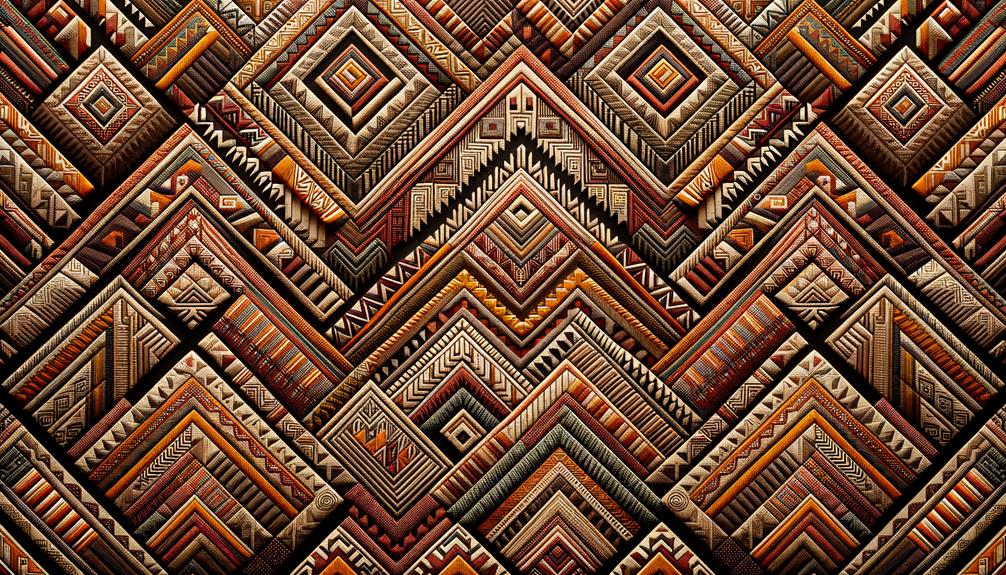
You could see the story of the Inca civilization woven into their fabric patterns and designs, where each abstract geometric motif and vibrant color spoke volumes about their world. Inca textiles were more than just cloth; they were cultural canvases. The meticulous weavers, often with looms around their waist, crafted intricate designs that blended checkerboard motifs with geometric elegance.
Each pattern had a specific meaning and purpose. Abstract designs of felines, llamas, snakes, and birds danced across the fabric, telling stories of nature and spirituality. These designs weren't random; they were specific to family groups, or ayllus, and sometimes served as a form of taxation to the state. Imagine paying your dues in the form of a beautifully woven piece of history.
Color symbolism was crucial. The Inca knew that a splash of red or a hint of yellow could convey messages as profound as any spoken word. Textile decoration didn't stop at patterns; tassels, brocade, feathers, and precious beads added layers of depth and meaning. Inca textiles were a masterclass in storytelling, each thread meticulously placed to create a tapestry of life, legacy, and innovation.
Frequently Asked Questions
What Kind of Clothing Did the Incas Wear?
Inca men wore loincloths, tunics, and cloaks made from cotton or wool, while women draped themselves in large cloths. Their clothing wasn't just practical – it also reflected their social status, with nobles wearing the finest textiles.
What Textiles Were Worn by the Inca Elite Which Has Geometric?
Imagine wrapping yourself in a canvas of stories; the Inca elite wore textiles adorned with intricate geometric tocapus. These patterns, woven by acllas, conveyed a rich cultural identity, social standing, and ancestral heritage.
What Place Did Textiles Hold in Incan Culture?
Textiles held a revered place in Incan culture, serving as status symbols, currency, art, and a means of communication. They were more than just fabric – they told stories and conveyed social codes. The intricate designs and profound cultural significance of these textiles leave me in awe.
Did the Inca Grow Cotton?
The Inca people did grow cotton, specifically in the lowlands. I can almost see the intricate patterns woven by the skilled aclla. Their vibrant textiles were a testament to their innovation and artistry.

